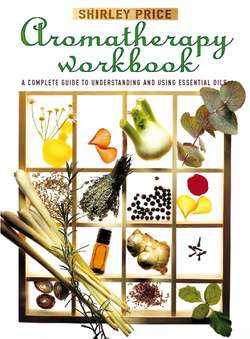Читать книгу Aromatherapy Workbook - Shirley Price - Страница 8
The Influence of Egypt
ОглавлениеMore is known about the development of plant use in Egypt and the surrounding Mediterranean countries; in fact the Nile valley became known as the Cradle of Medicine and among the plants brought to this area were cedarwood, frankincense, myrrh and cinnamon.
In Egypt 5,000 years ago, perfumery was so closely linked with religion that each of the gods was allotted a particular fragrance, with which their statues were sometimes anointed. It was the priests who formulated the aromas and the Pharaohs of the time asked them for perfumes with which to anoint themselves in times of prayer, war and love.
The Egyptians mainly used fats or waxes to extract the fat- or wax-soluble molecules from the plant material, and jars containing these aromatic unguents feature on many of the paintings in the Egyptian tombs.
To prepare an essence from cedarwood for hygienic use, and also for embalming, wood was heated in a clay vessel and covered with a thick layer of wool. The wool gradually became saturated with cedarwood oil and condensed steam; it was then squeezed, and the two substances were left to separate out. Here we can see the crude beginnings of distillation.
The Egyptians used plants, aromatic resins and essential oils in the process of embalming (prevention of the rotting and decay of once living tissue). They successfully preserved animals as well as humans by this method and the priests forecasted (correctly, as it happened!) that these bodies would last for at least 3,000 years.
Egyptian knowledge with respect to antisepsis and hygiene, so effectively demonstrated by mummification, meant that their influence has been felt right up to this century. In ancient Egypt the architects were among the leading scientists and Imhotep (who lived around 2750 BC) helped to initiate Egyptian medicine. One town, designed by Akhnaton’s architect, was built with large square spaces for the burning of herbs, to keep the air germ-free. In the hot climate and with a lack of proper sanitation, the use of aromatic substances made life more pleasant – and safer.
Egypt and India were not the only countries to develop the use of aromas for religion and medicine (each country adapting them for their own particular requirement); the Assyrians, Babylonians, Phoenicians, Jews, Chinese, Greeks, Romans and eventually the Christians all burnt resins in religious mystic and purification ceremonies.
